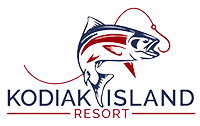King salmon, also known as Chinook salmon, are the largest and among the most prized catches for anglers visiting Alaska. Their annual migrations, known as runs, are a highlight for fishing enthusiasts seeking the thrill of landing these powerful fish. Understanding the timing of king salmon runs is essential for planning a successful fishing trip, especially to destinations like Kodiak Island, renowned for its abundant salmon populations.
Answering The Question: When Do King Salmon Run In Alaska?
General Timing of King Salmon Runs in Alaska
In Alaska, king salmon runs typically commence in the spring and can extend into the summer months, with variations depending on the region and specific river systems. Generally, the runs begin in May and can continue through July, with peak periods varying by location. For instance, in the Kenai Peninsula, the first run starts in mid-May and lasts until early July, followed by a second run from early July to the season closure on July 31. The timing of these runs is influenced by various environmental factors, including water temperature, river flow, and daylight hours. Warmer temperatures and increased daylight in late spring signal the salmon to begin their migration from the ocean back to their natal freshwater streams to spawn. This migration is a critical period in the salmon’s life cycle and presents prime opportunities for anglers to intercept them.
King Salmon Runs on Kodiak Island
Kodiak Island offers exceptional opportunities for king salmon fishing, with runs that align closely with the general Alaskan patterns. The island’s king salmon runs typically begin in late spring, around May, and continue through July. The peak of the run often occurs in June, providing anglers with prime fishing opportunities during this month. During this period, king salmon migrate from the ocean into Kodiak’s rivers and streams to spawn, making their way through both saltwater and freshwater environments. This migration offers diverse fishing experiences, from trolling in coastal waters to fly fishing in serene river settings. Notably, certain areas around Kodiak, such as Old Harbor, are renowned for their trophy-sized king salmon. Anglers have reported catches of kings weighing between 30 to 90 pounds during the peak season.
Factors Influencing Run Timing
Several factors can influence the timing and strength of king salmon runs, including water temperature, river flow, and environmental conditions. Variations in these factors can cause shifts in run timing from year to year. Therefore, it’s advisable for anglers to consult local resources and fishing reports when planning their trips to ensure they align with the peak of the run. For example, warmer spring temperatures can lead to earlier snowmelt, increasing river flows and potentially prompting an earlier start to the salmon run. Conversely, cooler temperatures and delayed snowmelt can push the run later into the season. Additionally, factors such as ocean conditions and food availability can impact the health and timing of returning salmon populations.
Fishing Techniques for King Salmon
Anglers employ various techniques to target king salmon, adapting methods to the specific environments of Kodiak Island. In saltwater, trolling is a common approach, utilizing downriggers and lures such as spoons or hoochies to entice salmon. Jigging can also be effective, especially when salmon are schooling near the ocean floor. In freshwater systems, methods like drift fishing, fly fishing, and casting with spinners or plugs are popular. Understanding the behavior of king salmon during their spawning migration—such as their tendency to hold in deeper pools or migrate during specific times of the day—can significantly enhance angling success.
Fishing Regulations and Sustainability
Alaska’s Department of Fish and Game (ADF&G) implements specific regulations to manage king salmon populations and ensure sustainable fishing practices. These regulations include daily bag limits, size restrictions, and seasonal closures, which can vary by region and are subject to change based on real-time assessments of fish populations. For example, in some areas, the daily bag limit for king salmon may be one or two fish, with or without annual limits, depending on the health of the fishery. Anglers are encouraged to review the current regulations before embarking on their fishing adventures to ensure compliance and contribute to the conservation of this valuable species. The ADF&G website provides up-to-date information on fishing regulations across the state.
Planning Your King Salmon Fishing Trip to Kodiak Island
To maximize the chances of a successful king salmon fishing experience on Kodiak Island, consider the following tips:
- Timing: Plan your trip between May and July, with June often offering peak fishing opportunities.
- Guided Services: Utilize local guides who possess in-depth knowledge of the area’s waterways and current fishing conditions.
- Gear Preparation: Ensure you have appropriate fishing gear suitable for both saltwater and freshwater environments, as king salmon are known for their size and strength.
- Regulation Awareness: Stay informed about the latest fishing regulations to ensure compliance and support sustainable fishing practices.
